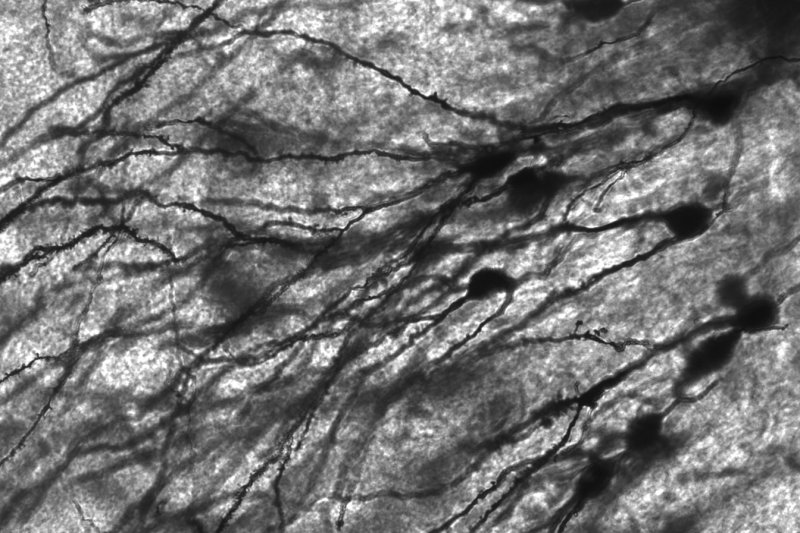Scientists have developed a new device that controls groups of neurons using precisely controlled light emission. Photo by MethoxyRoxy/Wikimedia Commons
Jan. 2 (UPI) -- Scientists in the field of optogenetics can now wield more precise control over the brain using the power of light.
Optogenetic researchers tag neurons with opsins, proteins that turn light into electric signals. When light is shone on the target region of the brain, the opsin excites the target neurons.
"We're making these tools to understand how different parts of the brain work," Philipp Gutruf, a biomedical engineering professor at the University of Arizona, said in a news release. "The advantage with optogenetics is that you have cell specificity: You can target specific groups of neurons and investigate their function and relation in the context of the whole brain."
The earliest optogenetic techniques used optic fibers. The next generation of technology involved battery-free, wireless electronic devices.
Now, Gutruf and his research partners have managed to shrink the technology and make it more precise.
"With this research, we went two to three steps further," Gutruf said. "We were able to implement digital control over intensity and frequency of the light being emitted, and the devices are very miniaturized, so they can be implanted under the scalp. We can also independently stimulate multiple places in the brain of the same subject, which also wasn't possible before."
One of the device's key attributes is its ability to control the light's intensity. Stronger emissions can allow the light to reach deeper parts of the brain, while weaker emissions can ensure excess light and heat don't activate the wrong neurons.
The small, implantable device is powered by external oscillating magnetic fields, and a new antenna system allows for improved communication with the controlling mechanism.
"This system has two antennas in one enclosure, which we switch the signal back and forth very rapidly so we can power the implant at any orientation," Gutruf said. "In the future, this technique could provide battery-free implants that provide uninterrupted stimulation without the need to remove or replace the device, resulting in less invasive procedures than current pacemaker or stimulation techniques."
Researchers described their new optogenetic technology in the journal Nature Electronics.















